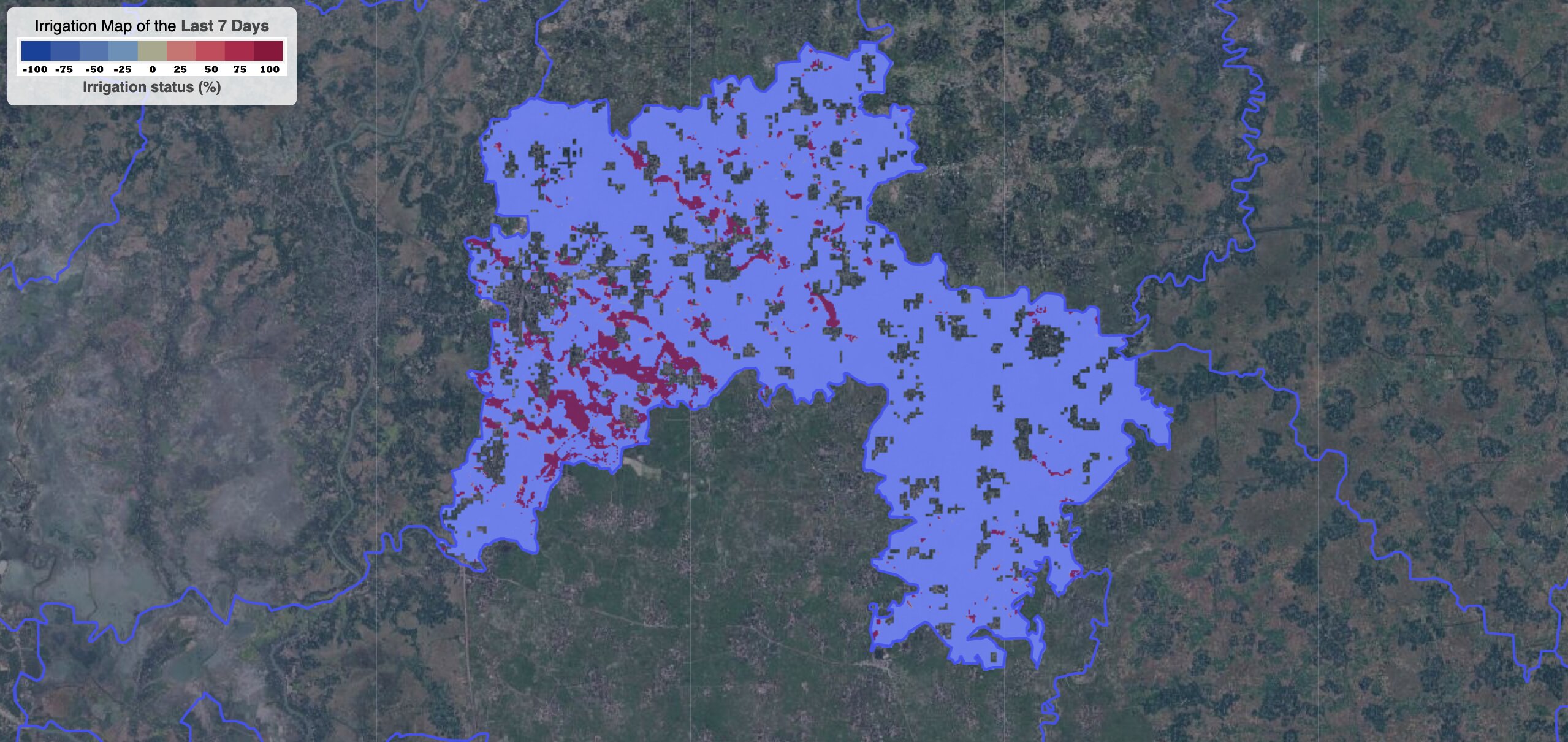With a population of nearly 170 million, Bangladesh is one of the most densely populated countries in the world. Almost half of its residents are involved in farming, and rice cultivation is crucial for feeding the population.
Therefore, when researchers from the University of Washington and Bangladesh’s Ministry of Agriculture teamed up to utilize data from NASA and its partners to assist the country’s rice farmers, the potential benefits were significant. Through their IRAS (Integrated Rice Advisory System) program, researchers from UW and Bangladesh utilize satellite data to provide farmers with information about their water usage, availability, and crop needs.
Rice is an essential crop in Bangladesh, requiring substantial amounts of water and fuel for cultivation. During the dry season, which lasts from January to June, farmers generally extract groundwater from aquifers. However, pumping is costly and contributes to carbon dioxide emissions from fuel combustion.
“To establish sustainable and climate-resilient agriculture for the future, we need to minimize irrigation waste and decarbonize production by employing affordable solutions that can be scaled globally,” stated Faisal Hossain, professor of civil and environmental engineering at the University of Washington and leader of IRAS.
In June 2023, the IRAS team successfully implemented a nationwide initiative, delivering irrigation advisories to over 10 million farmers throughout Bangladesh. The program has the potential to reduce agricultural water waste by approximately 30%, decrease fuel consumption by 45%, save $115 million annually in fuel subsidies, and reduce carbon emissions by 300,000 tons per year.
How IRAS Works
IRAS utilizes specific satellite data to generate irrigation advisories for farmers in Bangladesh. These advisories inform farmers about the required water amounts for their crops based on precipitation and groundwater measurements in their respective areas. They also identify regions that have experienced over- or under-irrigation in the past.
The advisories incorporate data from the NASA/USGS Landsat mission, providing imagery and information regarding water use in farming locations. Additionally, data from the joint NASA and Japan Aerospace Exploration Agency’s Global Precipitation Measurement (GPM) mission are utilized to track total precipitation in the area. These datasets are further enhanced with information from the U.S. National Weather Service’s Global Forecast System (GFS), which provides precipitation forecasts for the upcoming week. Agronomists in Bangladesh analyze and compile these datasets and reports to create comprehensive advisories and recommendations tailored to the specific locations of farmers.
“The synergistic use of Landsat, GPM, and GFS can contribute to enhanced water and energy efficiency in food production, while also becoming more affordable and convenient for farmers,” Hossain explained.
Human Impacts, Present and Future
“When I see my work positively impacting someone, even if it’s just a single person, it brings me joy,” said Shahzaib Khan, a graduate research student working with Hossain at the University of Washington. “To see this work impacting so many people, that is beyond words.”
Khan collaborated closely with staff from Bangladesh’s Department of Agricultural Extension and Agro-Meteorological Information Service to develop and implement the IRAS system.
Hossain and his team aim to expand the reach of IRAS in the coming years. As NASA and Landsat datasets are freely accessible to the public, there is potential for developing similar cost-effective programs. For instance, sugar cane, which is extensively grown in regions like Africa, South Asia, and Indonesia, could also benefit from a program like IRAS.
“Our hope is that this approach can be utilized in any region where crop types and their water demand characteristics are known,” Hossain concluded.
Denial of responsibility! TechCodex is an automatic aggregator of the all world’s media. In each content, the hyperlink to the primary source is specified. All trademarks belong to their rightful owners, and all materials to their authors. For any complaint, please reach us at – [email protected]. We will take necessary action within 24 hours.

Jessica Irvine is a tech enthusiast specializing in gadgets. From smart home devices to cutting-edge electronics, Jessica explores the world of consumer tech, offering readers comprehensive reviews, hands-on experiences, and expert insights into the coolest and most innovative gadgets on the market.


